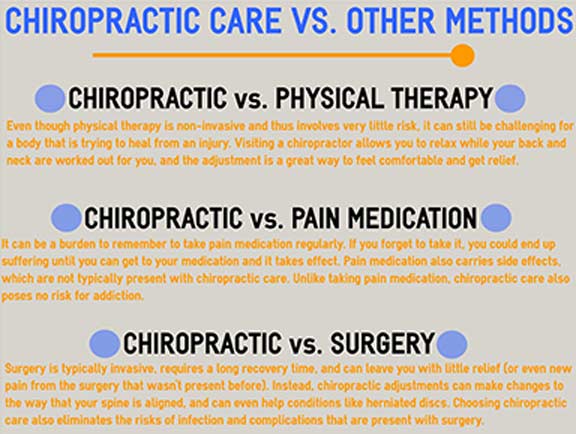Essential Daily Behaviors That Can Cause Back Pain And Exactly How To Steer Clear Of Them
Essential Daily Behaviors That Can Cause Back Pain And Exactly How To Steer Clear Of Them
Blog Article
Short Article Author-Dyhr Schaefer
Keeping correct stance and avoiding common challenges in day-to-day activities can dramatically impact your back health. From how you sit at your desk to just how you lift hefty objects, small modifications can make a large distinction. Envision a day without the nagging neck and back pain that prevents your every action; the option may be easier than you think. By making a couple of tweaks to your day-to-day routines, you could be on your means to a pain-free existence.
Poor Position and Sedentary Way Of Life
Poor position and an inactive lifestyle are 2 major contributors to pain in the back. When you slouch or hunch over while resting or standing, you placed unnecessary pressure on your back muscles and spine. This can lead to muscle imbalances, tension, and eventually, persistent pain in the back. In addition, sitting for extended periods without breaks or physical activity can compromise your back muscle mass and cause tightness and pain.
To combat bad pose, make an aware effort to rest and stand straight with your shoulders back and straightened with your ears. Keep in mind to maintain your feet flat on the ground and stay clear of crossing your legs for extended periods.
Integrating regular stretching and reinforcing exercises into your everyday routine can also aid enhance your pose and minimize pain in the back connected with a sedentary lifestyle.
Incorrect Training Techniques
Improper training techniques can substantially add to pain in the back and injuries. When you lift hefty things, bear in mind to flex your knees and use your legs to lift, instead of relying upon your back muscle mass. Prevent turning your body while training and keep the item near to your body to lower stress on your back. It's important to keep a straight back and prevent rounding your shoulders while lifting to avoid unnecessary pressure on your spinal column.
Constantly analyze the weight of the things before lifting it. If it's as well heavy, request for assistance or use tools like a dolly or cart to move it securely.
Bear in mind to take breaks throughout raising jobs to provide your back muscle mass a possibility to relax and avoid overexertion. By carrying out appropriate training methods, you can stop back pain and decrease the risk of injuries, ensuring your back remains healthy and balanced and solid for the long term.
Absence of Regular Exercise and Stretching
A sedentary way of living devoid of normal workout and extending can significantly add to pain in the back and pain. When integrative care do not take part in exercise, your muscles become weak and inflexible, causing poor pose and raised pressure on your back. Routine exercise helps reinforce the muscles that sustain your back, enhancing stability and decreasing the danger of neck and back pain. Including extending into your routine can likewise improve versatility, protecting against rigidity and pain in your back muscles.
To stay kaiser permanente chiropractor of neck and back pain brought on by a lack of workout and extending, go for at least half an hour of modest exercise most days of the week. Include exercises that target your core muscle mass, as a solid core can assist relieve pressure on your back.
Furthermore, take breaks to extend and move throughout the day, specifically if you have a workdesk work. Simple stretches like touching your toes or doing shoulder rolls can assist relieve tension and avoid pain in the back. Prioritizing regular workout and extending can go a long way in preserving a healthy back and minimizing pain.
Conclusion
So, bear in mind to stay up directly, lift with your legs, and stay energetic to stop pain in the back. By making simple changes to your everyday habits, you can stay clear of the discomfort and limitations that include neck and back pain. Take care of your spine and muscular tissues by practicing excellent pose, appropriate lifting techniques, and routine workout. https://www.healthline.com/health/hiv/hiv-back-pain will thank you for it!
